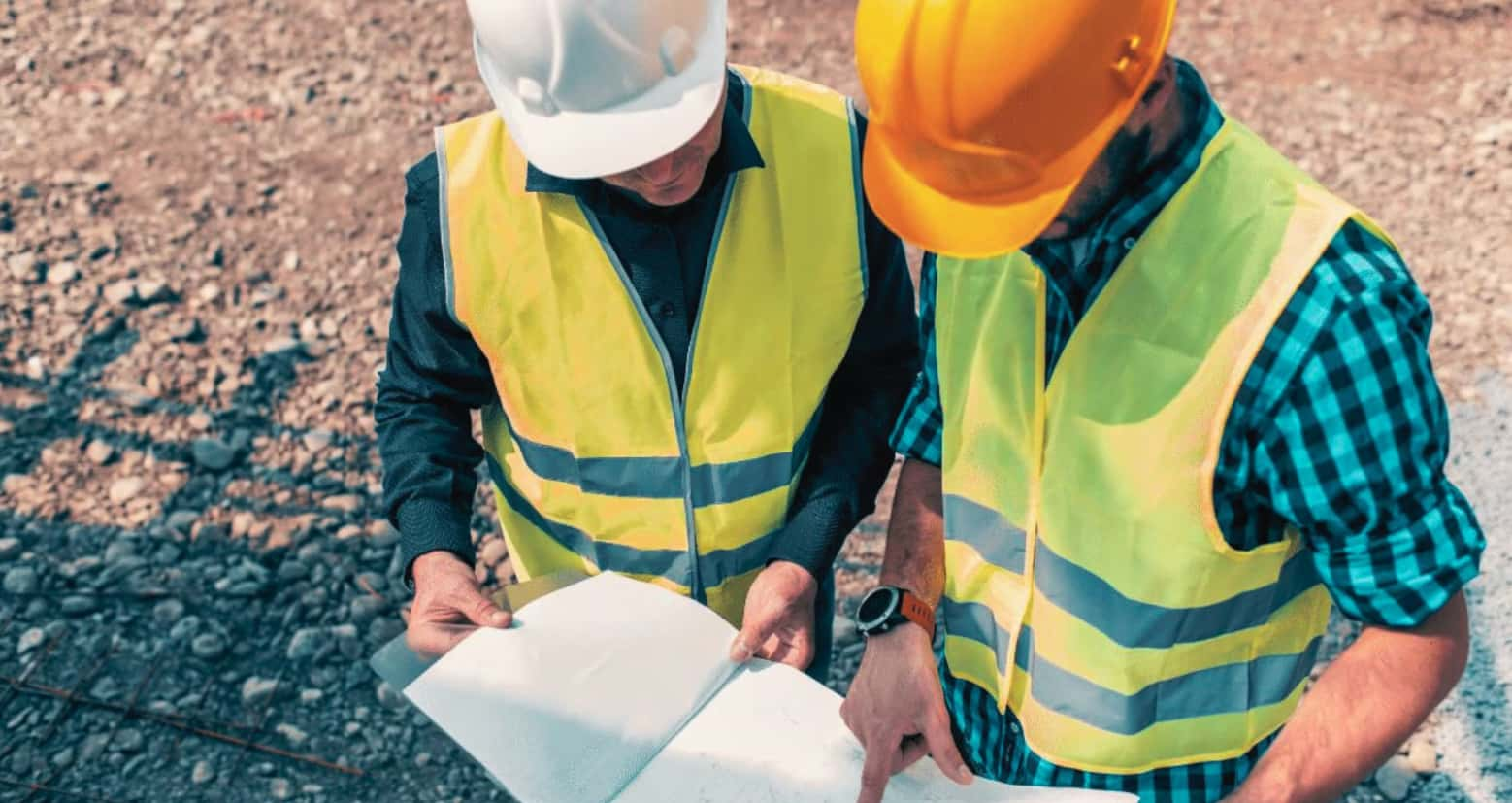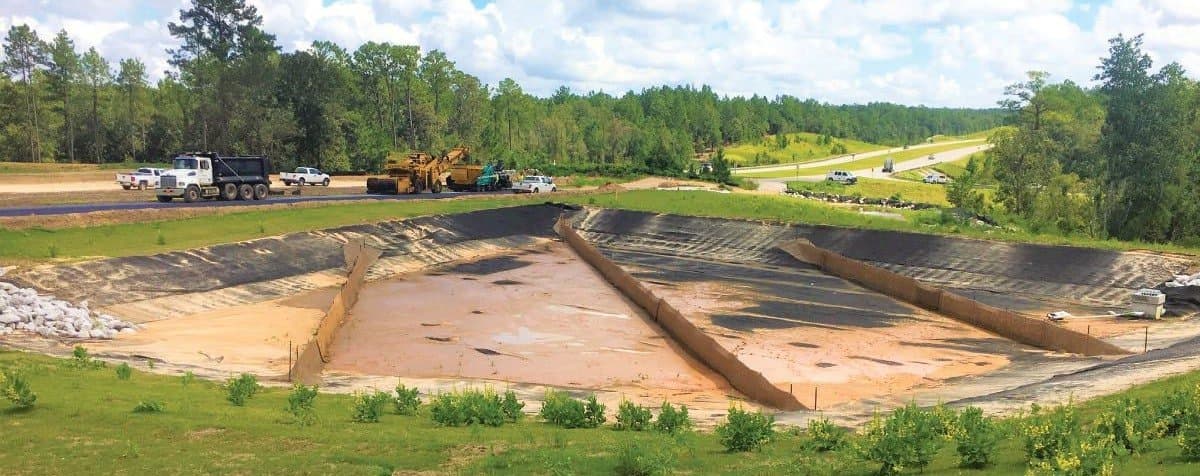This article is a guide on sediment management planning, its key principles and best practices on construction sites.
A sediment management plan is paramount in construction and land development projects due to its significant role in environmental protection, regulatory compliance, and overall project success.
Sediment runoff from construction sites into drainage systems is illegal and can result in huge fines! Read more about this on our blog about sediment runoff penalties.
Site Assessment and Planning

Site Survey and Mapping
Conduct a comprehensive site survey to identify natural drainage patterns, water bodies, and potential sediment sources. Map out the construction site, noting areas of high erosion risk and proximity to water bodies.
Topography Analysis
Analyze the site’s topography to identify potential flow paths for stormwater runoff. This information will help in designing effective sediment control measures.
Soil Analysis
Assess soil types and infiltration rates to determine susceptibility to erosion. Different soils require specific stabilization techniques.
Weather Considerations
Consider historical weather data to anticipate potential rain events and their impact on sediment runoff.
Risk Classification

Classifying construction sites based on their risk levels for sediment and erosion control is essential for allocating appropriate resources, implementing effective measures, and ensuring regulatory compliance.
Low Risk Sites
Low risk construction sites typically have characteristics that make them less prone to sediment and erosion issues. These sites have minimal impact on surrounding water bodies and ecosystems.
Characteristics:
- Flat or gentle slopes
- Well-draining soils (coarse sand)
- Limited proximity to water bodies (within 250m of the site)
- Small construction footprint
- Minimal earthmoving activities
Recommended Measures:
- Basic erosion control measures, such as silt fences along any potential drainage paths.
- Mulching or seeding on exposed soil.
- Regular inspections and minor maintenance of control measures.
Medium Risk Sites
Medium risk construction sites have moderate potential for sediment and erosion issues. They may have some challenging terrain or proximity to water bodies that require careful management.
Characteristics:
- Moderate slopes
- Varied soil types with moderate susceptibility to erosion (sandy soil or silt)
- Proximity to smaller water bodies or intermittent streams (within 100m of the site)
- Moderate construction footprint and earthmoving activities
Recommended Measures:
- Combination of erosion control measures, including silt fences, sediment basins, and sediment traps.
- Vegetative cover establishment through seeding and planting.
- Regular inspections and maintenance of control measures, especially before and after rain events.
High Risk Sites
High risk construction sites pose a significant threat of sediment and erosion problems due to challenging terrain, large construction footprint, or proximity to sensitive water bodies.
Characteristics:
- Steep slopes or significant changes in elevation
- Poorly draining or highly erodible soils (mainly clay or silt)
- Direct proximity to larger water bodies, rivers, or wetlands (including downstream waterways within 100m of the site)
- Extensive construction activities involving grading and earthmoving
Recommended Measures:
- Comprehensive erosion control plan involving silt fences, sediment basins, sediment traps, and additional measures like check dams.
- Intensive vegetative cover establishment, possibly with erosion control blankets or geotextiles.
- Regular and frequent inspections, particularly before, during, and after rain events.
- Implementation of advanced erosion prevention techniques, such as geogrids or erosion control matting.
It’s important to note that the classification can be dynamic and may change based on various factors, including weather conditions, project progression, and unforeseen site-specific challenges.
Regular monitoring and adaptation of sediment and erosion control measures are crucial to ensure effective management throughout the construction process. Additionally, local regulations and guidelines should always be consulted to determine appropriate measures for each risk category.
Best Sediment Management Practices

- Silt Fences and Sediment Barriers
Install silt fences along the perimeter of the construction site, especially on slopes and near water bodies. These barriers help intercept sediment-laden runoff and allow water to filter through.
- Sediment Basins and Traps
Construct sediment basins or traps at strategic locations to capture and settle out sediment before water is discharged off-site.
- Erosion Control Measures
Use erosion control blankets, geotextiles, or matting to stabilize exposed soil. These measures prevent soil particles from being dislodged by rainfall or wind.
- Vegetative Cover
Establish vegetative cover through seeding or planting native vegetation to stabilize soil and reduce erosion.
- Disturbance Minimization
Plan construction activities to minimize soil disturbance. Concentrate work in one area at a time to reduce the extent of exposed soil.
- Construction Entrances and Exits
Install gravel construction entrances and exits to prevent sediment from being tracked onto public roads.
Best Construction Practices

- Phased Construction
Implement construction in phases, starting from areas with lower erosion risk before progressing to more sensitive zones.
- Diversion Berms and Dikes
Construct diversion berms and dikes to channel stormwater away from vulnerable areas and direct it toward sediment basins or vegetated zones.
- Schedule Coordination
Coordinate construction activities to avoid disturbing soil during periods of heavy rain or when the soil is most susceptible to erosion.
- Material Storage
Store construction materials, chemicals, and equipment away from drainage pathways and water bodies to prevent accidental contamination.
In summary, a sediment management plan is essential for minimizing environmental impacts, complying with regulations, reducing risks, and ensuring the overall success and sustainability of construction and land development projects. It is a proactive approach that aligns with ethical and responsible construction practices in today’s environmentally conscious landscape. Some of the key principles to keep in mind when it comes to erosion and sediment control are summarized below.

A well-implemented sediment management plan contributes to the long-term sustainability of the project and the surrounding environment. By preventing erosion and sediment runoff, the plan supports the health of local water bodies, preserves natural habitats, and leaves a positive legacy for future generations.
For further information please click here.

 Coir Logs
Coir Logs Coir Blankets
Coir Blankets Coir Mesh
Coir Mesh Jute Matting
Jute Matting Jute Mesh
Jute Mesh Silt Fences
Silt Fences Accessories
Accessories Raised Garden Beds
Raised Garden Beds Weed Mats
Weed Mats Biaxial Geogrid
Biaxial Geogrid Uniaxial Geogrid
Uniaxial Geogrid Non Woven Geotextiles
Non Woven Geotextiles Sand Containers
Sand Containers Silt Socks
Silt Socks Dewatering
Dewatering Drain Filters
Drain Filters Water Filled Barriers
Water Filled Barriers Edge Protection Barrier
Edge Protection Barrier Hoarding Panels
Hoarding Panels Barrier Mesh & Bunting
Barrier Mesh & Bunting Star Picket Posts & Accessories
Star Picket Posts & Accessories Flood Tubes & Stabilizers
Flood Tubes & Stabilizers Sandbags
Sandbags